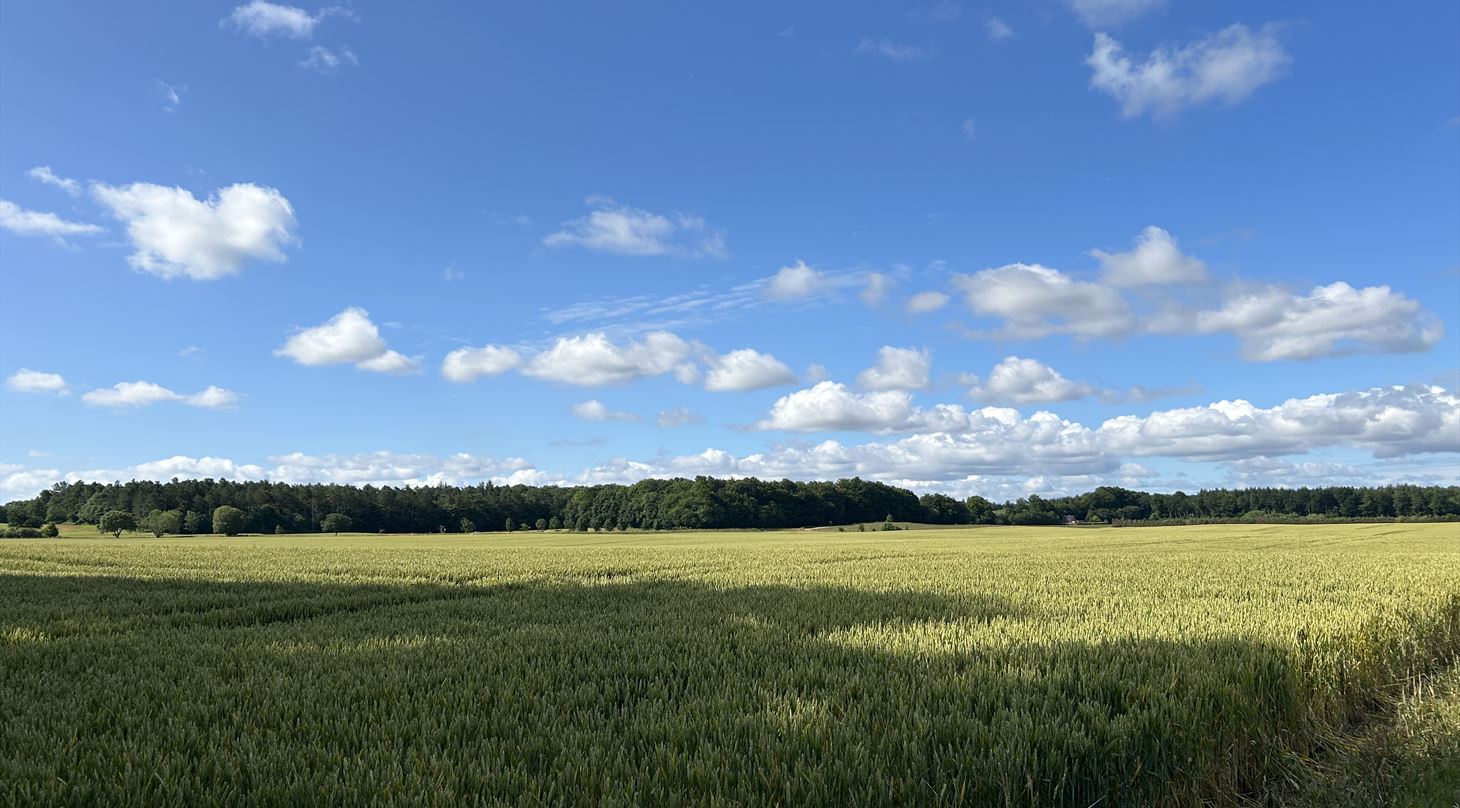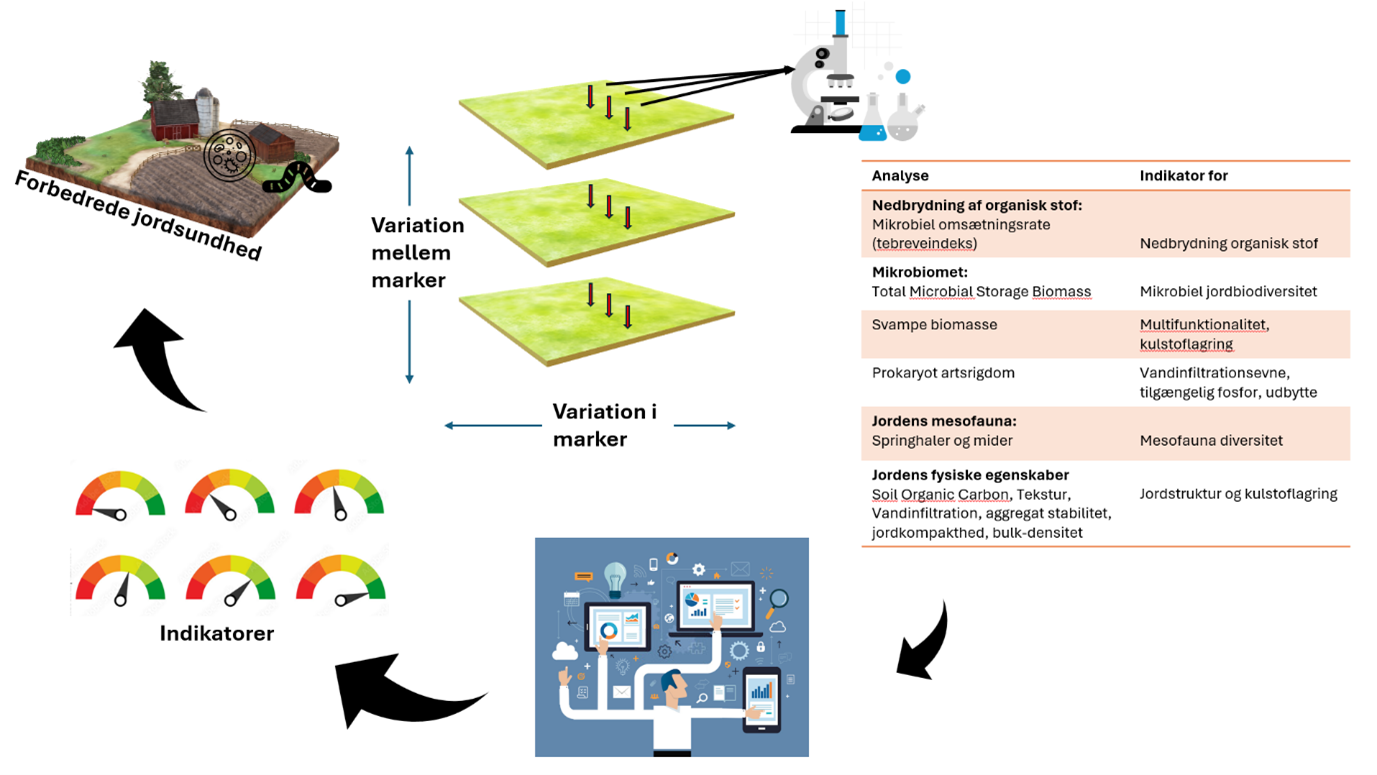
Indicators of soil health: Enabling the measurement of soil health
Project Period: June 1, 2025 – May 31, 2027
The project is supported by PlanDanmark
In a new initiative, we will include microbiological indicators to assess soil condition
Due to many years of intensive agriculture, the majority of agricultural soils are in decline. Therefore, it is necessary to restore soil fertility in line with the EU’s vision for sustainable and green food production.
With the project "Indicators of Soil Health," we aim to contribute to the development of sustainable agriculture, where yield, soil biodiversity, and multifunctionality are in balance. Multifunctionality refers, for example, to the soil’s ability to store carbon—preventing it from becoming CO₂ in the atmosphere—minimized risk of erosion and greenhouse gas emissions, and optimized nutrient cycling without leaching.
At the microbiological level
Our goal is to develop a set of measurable indicators that can evaluate both the biological and physical state of the soil, as well as the effects of regenerative practices.
Soil that is cultivated and used for crop production is primarily characterized by physical parameters such as texture and compaction. As something new, we will include microbiological indicators to assess whether these can provide significantly more insight into soil health and recommendations for cultivation practices.
Digging deeper
"Indicators of Soil Health" stems from the EU project SOILGUARD, in which Danish Technological Institute helped examine soil biodiversity, how the soil is affected by cultivation practices and erosion and whether it can build resilience to climate change.
The results of SOILGUARD point towards a manageable set of promising indicators that can serve as practical tools for monitoring soil health. With "Indicators of Soil Health," we are going a step further by testing, validating, and fine-tuning these indicators under Danish conditions, and by comparing analyses with results from SOILGUARD to validate the indicators across space and time.

